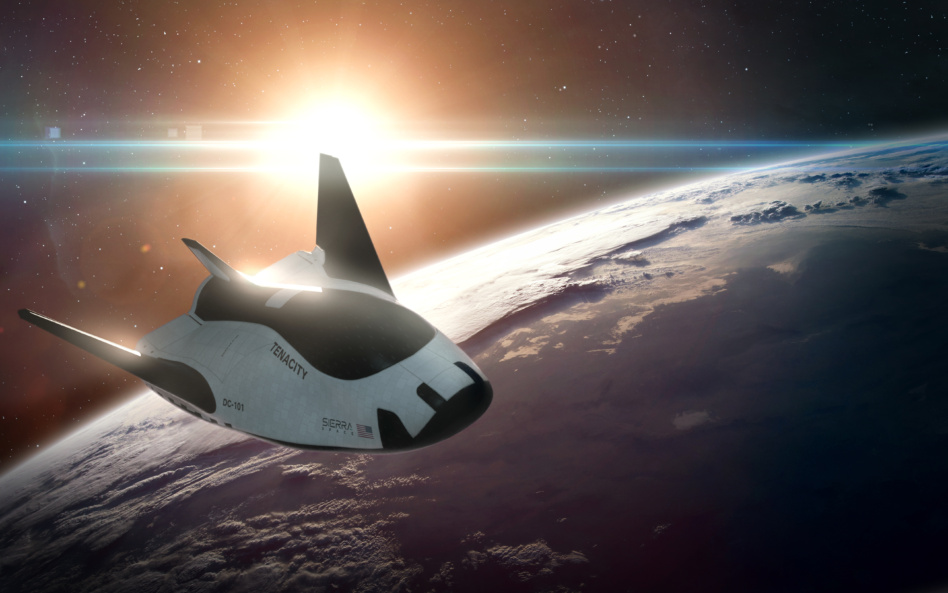The spaceplane is back.
Sierra Space completed construction of its Dream Chaser spaceplane that will resupply the ISS, the company announced yesterday. The vehicle, dubbed Tenacity, will now head to a NASA facility for a battery of final environmental, vibration, and mission readiness tests ahead of its first launch to the ISS next year.
The mission: The Broomfield, CO-based company will hitch a ride to the ISS on ULA Vulcan’s second launch, scheduled for Q1 2024.
- The mission to the ISS is the first under a large NASA commercial resupply contract, which is targeting seven uncrewed delivery flights.
- Sierra has designed Dream Chaser to be reused 15+ times.
While the spacecraft will ascend vertically on Vulcan, it will return to Earth in a glide—landing horizontally on a runway. Along with avoiding a turbulent splashdown, the 1.5 g reentry speeds will offer a more leisurely ride and timely access to sensitive cargo, such as science experiments.
Shuttle comps: Dream Chaser, which has been in development for more than a decade, traces its origins back to the HL-20 spacecraft, a proposed substitute for the shuttle that NASA ultimately passed on.
- Dream Chaser spans 30 ft, one-quarter the size of the shuttle
- The spacecraft is capable of delivering 5,500 kg to the ISS, half the capacity of the shuttle
- Like the shuttle, the launch vehicle requires hundreds of custom-shaped reentry heat protection tiles, which can be a source of cost and headache
Training wheels: After ULA launches Dream Chaser, NASA will pull the spacecraft aside in orbit and conduct a series of control maneuver tests before it lets it anywhere near the ISS. With seven people inhabiting the space station, NASA will not be taking any chances.
Down the road: If Dream Chaser proves reliable, Sierra hopes to expand its launch offerings to transporting crew and national security payloads to orbit.
$5.3B valuation: Sierra Space brought in a $290M Series B funding round in September, bringing its valuation to $5.3B. In addition to Dream Chaser, the company also sells space system products and is developing a unique inflatable habitat to append to a space station.




